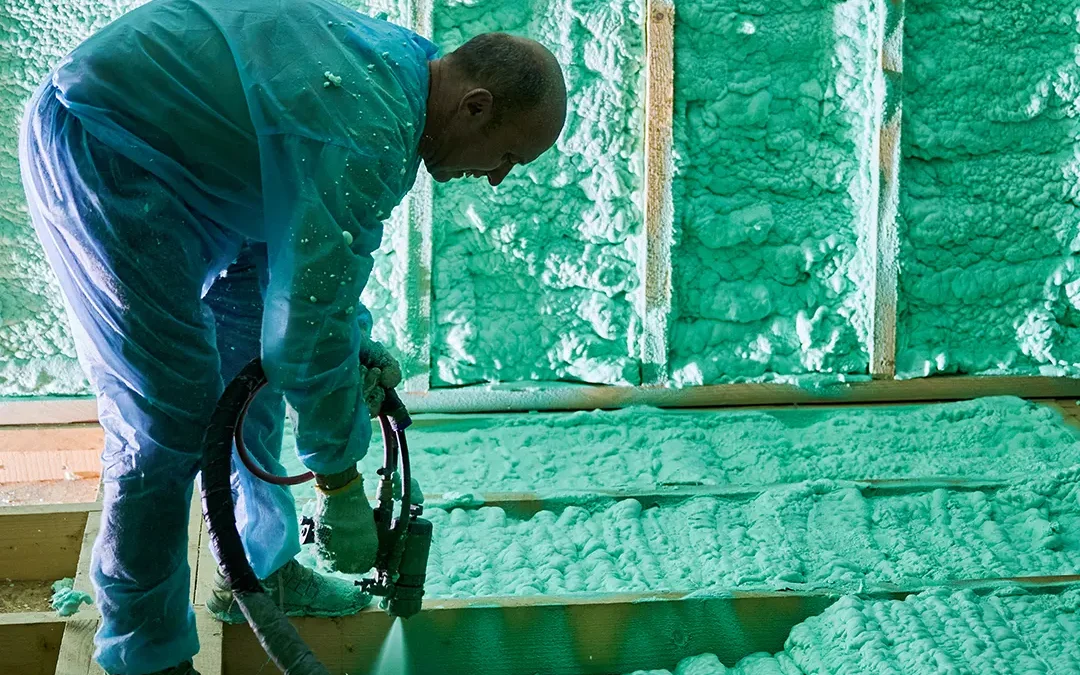Open-Cell Spray Foam: The Ultimate Insulation Solution for Long Island, Brooklyn, and Queens
Open-cell spray foam insulation is a popular choice among homeowners in Long Island, Brooklyn, and Queens, offering a range of benefits from energy efficiency to soundproofing. In this comprehensive guide, we’ll explore what open-cell spray foam is, its R-value, available kits, and why it might be the ideal insulation solution for your home.
What is Open-Cell Spray Foam?
Open-cell spray foam is a type of insulation composed of cells that are not completely closed. This structure makes the foam less dense, more flexible, and allows air to fill the open spaces within the material. When applied, the foam expands significantly, filling gaps and creating an effective air barrier.
Key Characteristics:
- Density: Approximately 0.5 pounds per cubic foot.
- Expansion: Expands up to 100 times its original size upon application.
- Permeability: Allows moisture vapor to pass through, reducing the risk of trapped moisture and potential mold growth.
Understanding the R-Value of Open-Cell Spray Foam
The R-value measures an insulation material’s resistance to heat flow; higher R-values indicate better insulating properties. Open-cell spray foam typically has an R-value ranging from R-3.6 to R-3.9 per inch.
Comparison with Other Insulation Types:
- Closed-Cell Spray Foam: Offers a higher R-value of approximately R-6 to R-7 per inch but is denser and more rigid.
- Fiberglass Insulation: Generally has an R-value between R-2.2 and R-2.7 per inch.
While open-cell spray foam has a lower R-value compared to closed-cell foam, its expansive nature allows it to fill cavities effectively, providing excellent air sealing and contributing to overall energy efficiency.
Benefits of Open-Cell Spray Foam Insulation
- Energy Efficiency: By expanding to fill gaps and cracks, open-cell spray foam minimizes air leakage, helping to maintain consistent indoor temperatures and reduce energy bills.
- Sound Dampening: The open-cell structure absorbs sound, making it an excellent choice for noise reduction between rooms or from external sources.
- Moisture Management: Its permeability allows moisture to escape, reducing the likelihood of mold growth and structural damage due to trapped moisture.
- Flexibility: The flexible nature of open-cell foam allows it to move with the building structure, reducing the risk of cracks and gaps over time.
- Cost-Effectiveness: Typically less expensive than closed-cell foam, making it a budget-friendly option for many homeowners.
Considerations and Limitations
- Lower R-Value: May require thicker application to achieve the desired insulation levels, especially in extreme climates.
- Not Water-Resistant: Unlike closed-cell foam, open-cell spray foam can absorb water, making it unsuitable for below-grade or high-moisture areas.
- Structural Support: Does not add to the structural integrity of a building, whereas closed-cell foam can provide additional rigidity.
Open-Cell Spray Foam Kits
For homeowners interested in DIY installation, open-cell spray foam kits are available and typically include:
- Two Chemical Components: Usually labeled as “A” and “B” sides, which combine to create the foam.
- Application Gun: For controlled spraying of the foam mixture.
- Nozzles: Various types for different application needs.
- Protective Gear: Gloves, goggles, and sometimes protective suits to ensure safety during application.
DIY Considerations:
- Safety: Always wear appropriate protective gear and ensure proper ventilation during application.
- Preparation: Thoroughly clean and dry surfaces before application to ensure proper adhesion.
- Practice: Familiarize yourself with the application process, as the foam expands rapidly and can be challenging to control for first-time users.
While DIY kits are available, professional installation is recommended for larger projects to ensure optimal performance and safety.
Is Open-Cell Spray Foam Right for Your Home in Long Island, Brooklyn, or Queens?
Given the climate in these areas, with cold winters and humid summers, open-cell spray foam can be an effective insulation solution. Its air-sealing properties help keep homes warm in the winter and cool in the summer, enhancing comfort and reducing energy costs.
Ideal Applications:
- Attics: Expands to fill gaps between rafters, providing a continuous air barrier.
- Interior Walls: Offers soundproofing benefits, reducing noise transmission between rooms.
- Ceilings and Floors: Enhances energy efficiency and comfort by minimizing air leakage.
Professional Installation Benefits:
- Expertise: Ensures correct application thickness and coverage for optimal performance.
- Safety: Professionals are equipped to handle chemicals safely and manage ventilation requirements during installation.
- Warranty: Professional installations often come with warranties, providing peace of mind for homeowners.
Open-Cell Spray Foam: Final Thoughts
Open-cell spray foam insulation offers numerous benefits, including energy efficiency, sound dampening, and moisture management, making it a compelling choice for homeowners in Long Island, Brooklyn, and Queens. While DIY kits are available, professional installation ensures optimal performance and safety.
If you’re considering upgrading your home’s insulation, Zavza Seal is here to help.
Call (631)980-1800 Now to Schedule Your Free Insulation Assessment!
Related Blog Posts:
- How Long Does the Restoration Process Take for Homes With Water Damage?
- What to Do If Your Home Has Water Damage?
- Signs of Water Damage in the Basement Walls
- Water Damage & Mold: Everything You Need To Know in 2023
- Things You Should Know About Water Damage
- Who Do I Call After My House Has Water Damage Restore?
- What Causes Water Damage to Floors and Walls
Related Services:
Our service areas:

